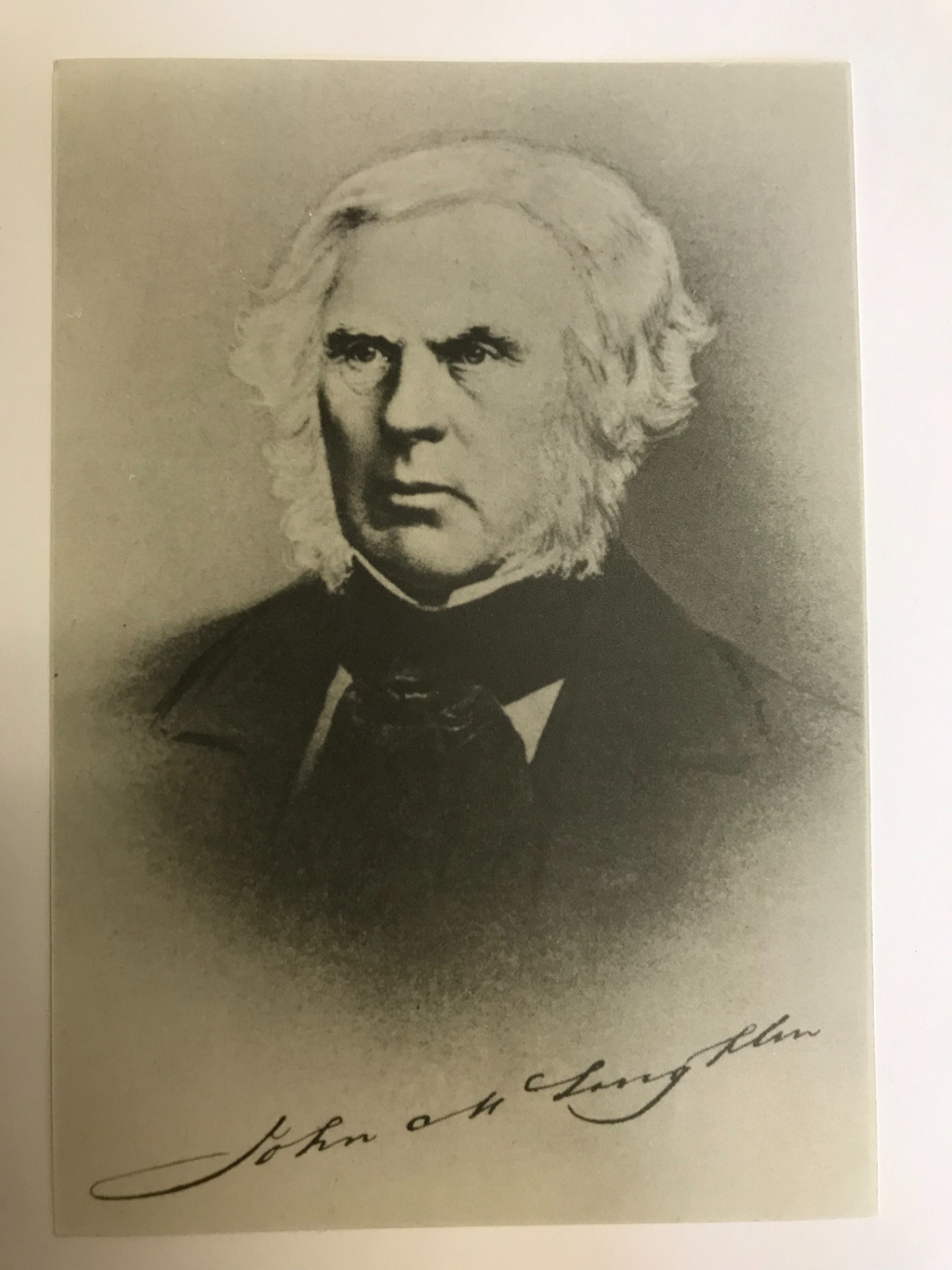
The second Saint-Patrice chapel

After repeated flooding of the chapel at the Pointe à la Grue, the shoreline site was abandoned. In 1806, Monseigneur Plessis, the bishop of Québec City, identified the McLoughlins’ land as the ideal new site for the place of worship. In 1810, Cornelius McLoughlin, son of John McLoughlin and Mary Short, donated land south of the new Chemin du Roi.
In 1812, a 30-by-75-foot wooden church was built. In 1830, the stone rectory was completed, along with the outbuildings needed to house the parish priest's animals. The Saint-Patrice religious hub welcomed its first resident priest and the parish was officially founded in 1833.
THE McLOUGHLINS’ LAND

In the early 19th century, John McLoughlin (1784–1857), physician for the North West Company and founder of Oregon, inherited the land from his ancestors. He was the eldest son of John McLoughlin (1756–1813) and Angélique Fraser (1761–1842), and the grandson of the donor of the Pointe à la Grue chapel.
After the inauguration of Saint-Patrice church in 1856, the old religious grounds was gradually dismantled and the cemetery moved.
Between 1862 and 1867, the land the old church and the stone rectory had stood on, as well as the McLoughlin land, were sold to Damase Caron (1823–1899). He left the land to his son, Nelson Caron. The old stone rectory burned down in June 1905. In 1922, the heir sold the land and buildings to Ernest Carrier (1870–1943).
A calvary was erected opposite the site of the former chapel to mark the 100th anniversary of the canonical founding of Saint-Patrice parish in 1933.
POINTE À LA GRUE AND THE McLOUGHLIN FAMILY

In 1790, Irish-born farmer John McLoughlin (1714–1812) and his wife Mary Short (1725–1805) donated a one-acre parcel of land on the riverfront at a spot known as Pointe à la Grue. Their neighbour, John Short (1722–1825), also donated an acre of frontage. Six acres of land were set aside in all for the church, rectory and cemetery. In 1791, local residents petitioned the bishop of Québec City to authorize the construction of a chapel at Pointe à la Grue. A 15-by-30-foot wooden chapel was inaugurated a year later. The first mass was said on St. Patrick’s Day, March 17, 1792, in tribute to the donors’ Irish origin.
Source: extract from Plan of the Seigniory of River du Loup and its dependances as surveyed in the year 1766 by John Collins, copied by Frederick Wyss in 1821, original made in 1766, BAnQ, P600,S4,SS2,D579.
THE FIRST CHEMIN DU ROI: RUE FRASER
As the Chemin de la Grève was impossible at high tide, the Grand Voyer Gabriel-Elzéar Taschereau laid out the route of the Chemin du Roi on the hillside in 1798. In time, homes also moved up to the new road.